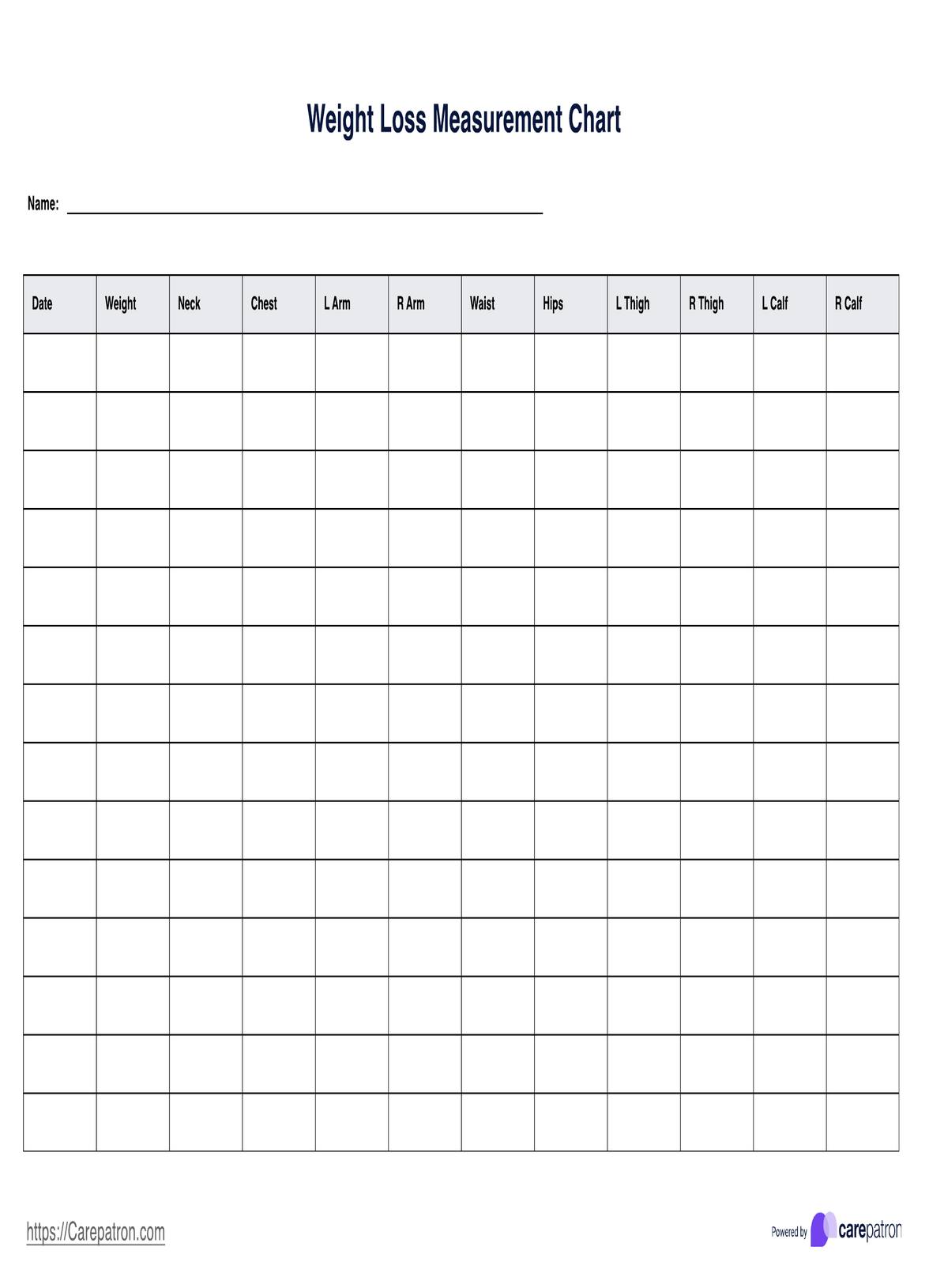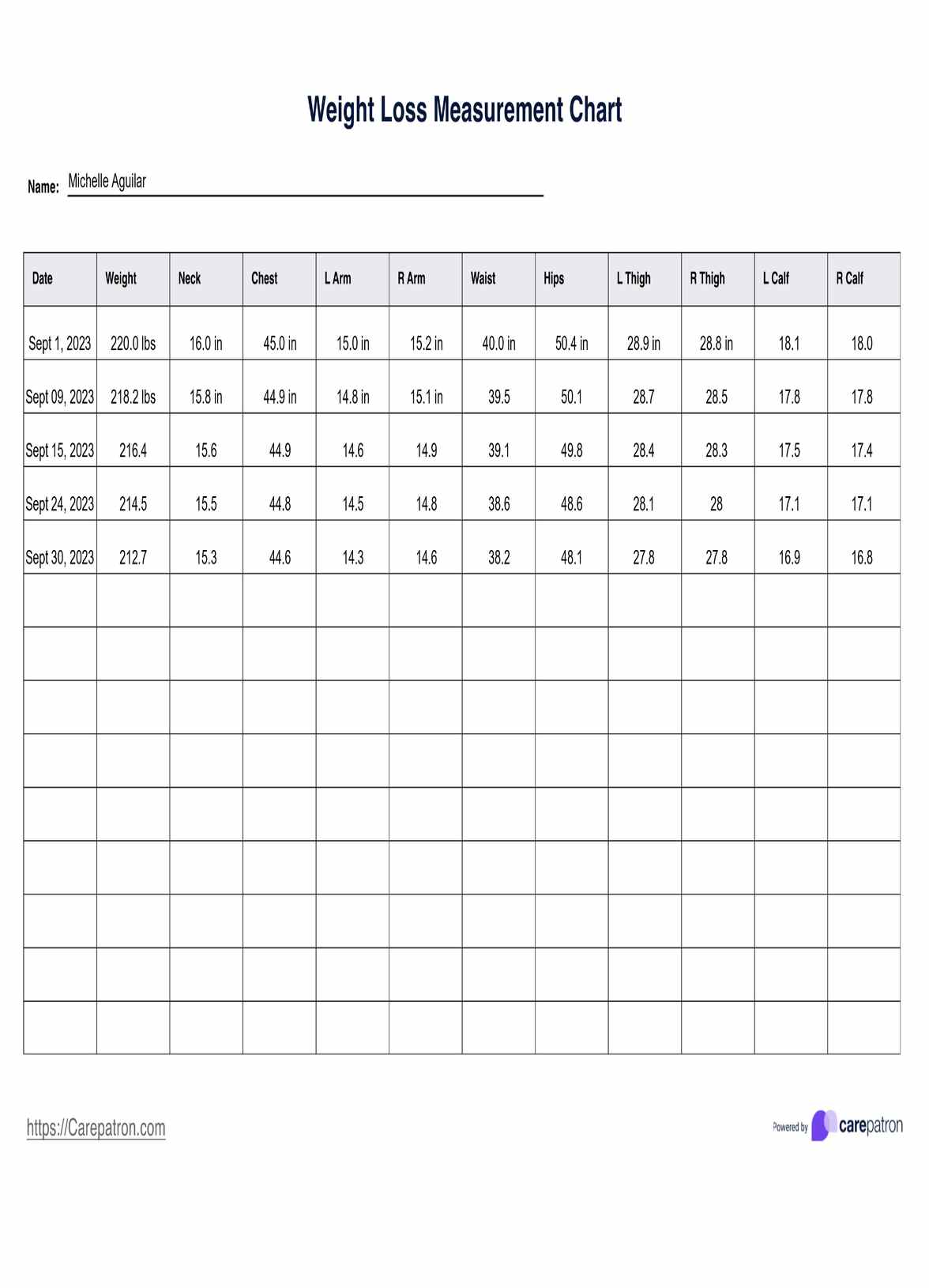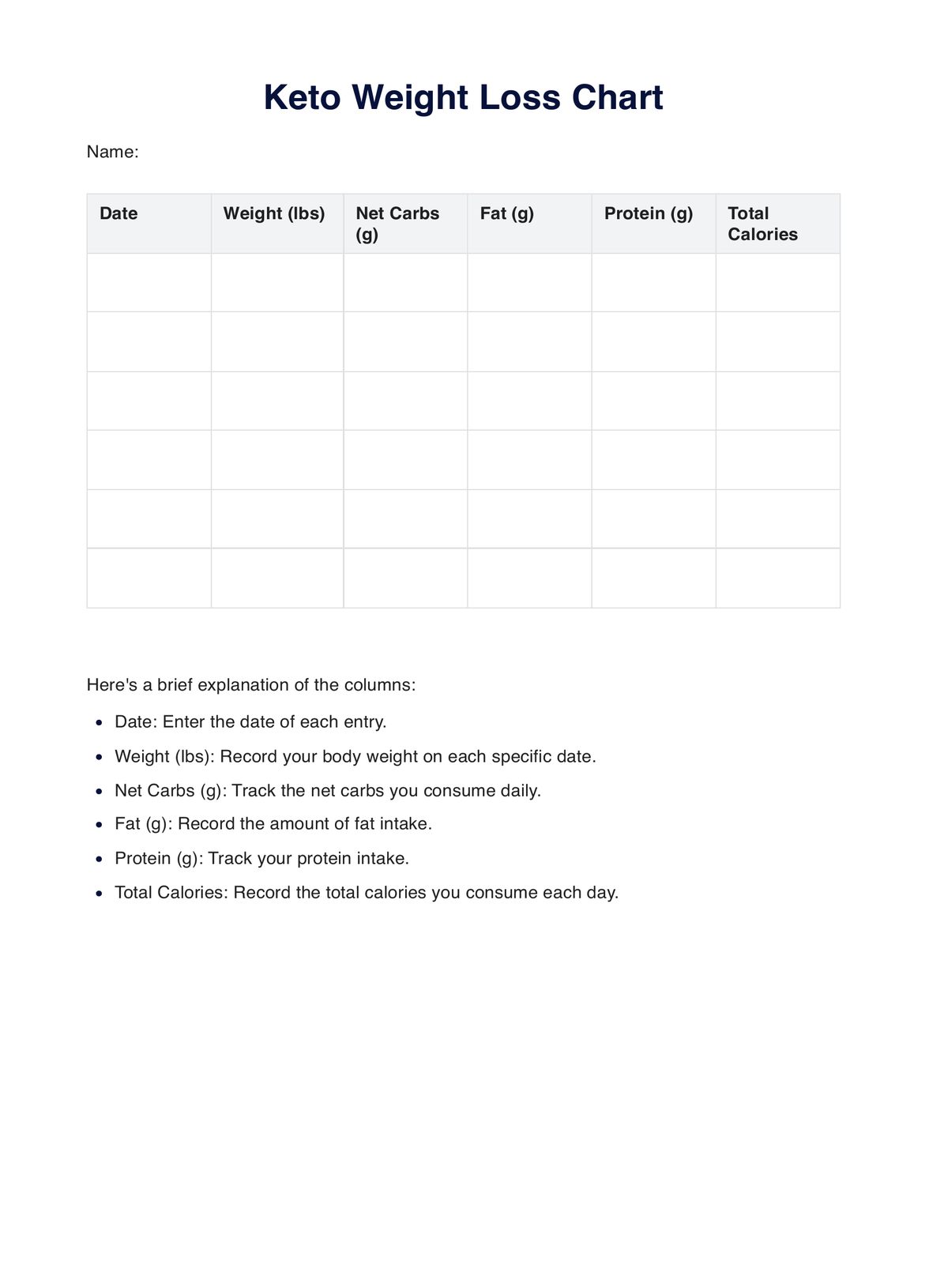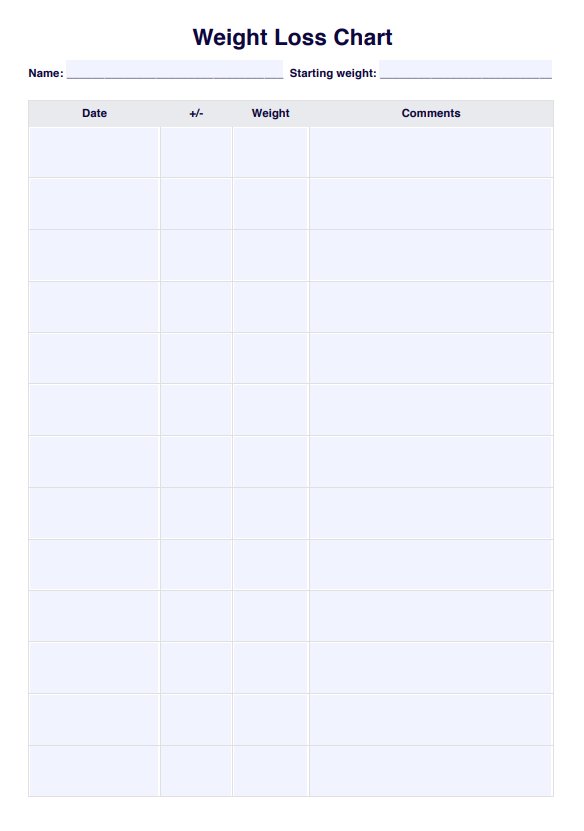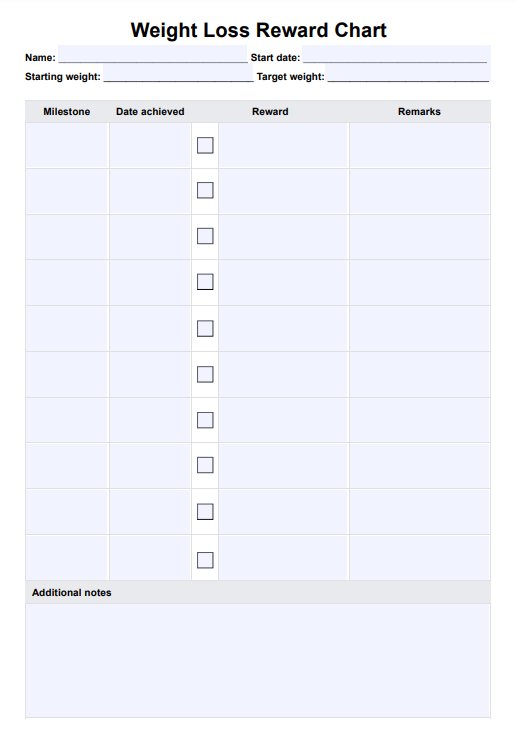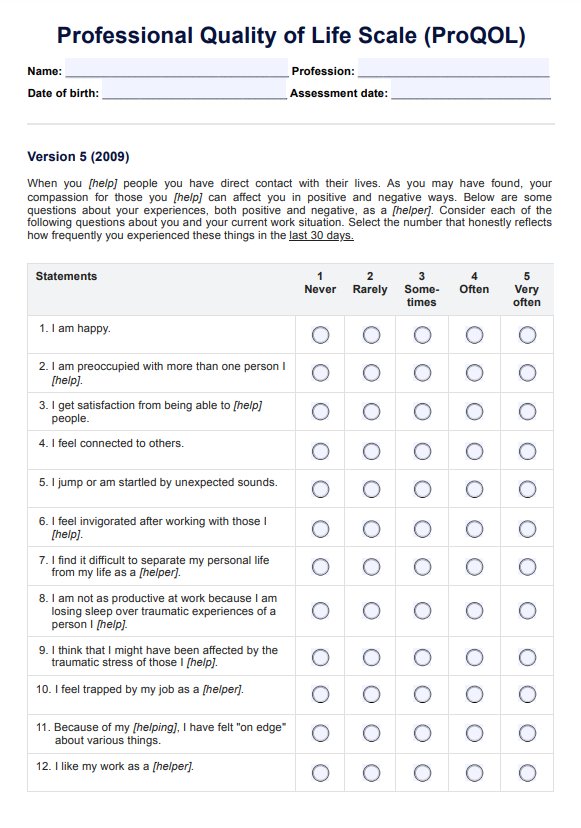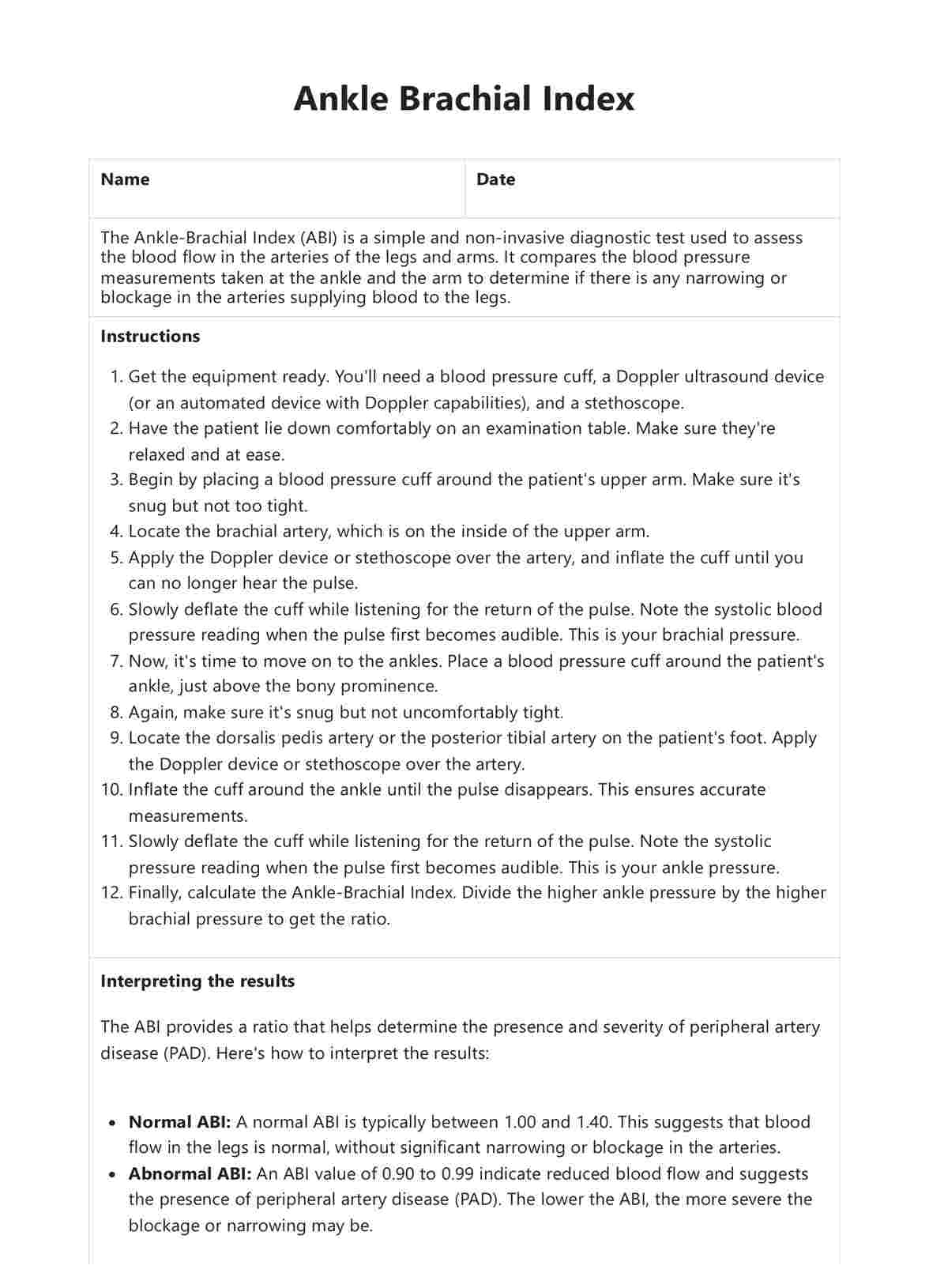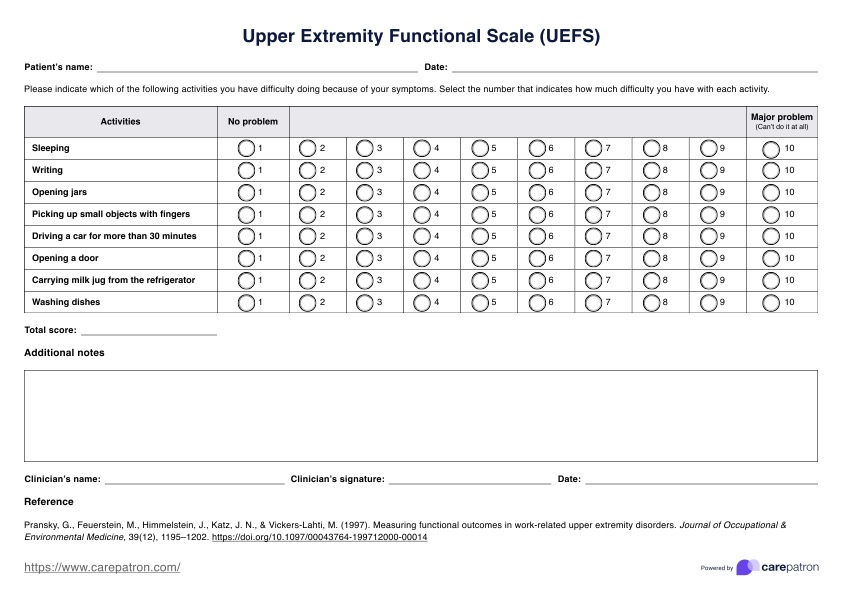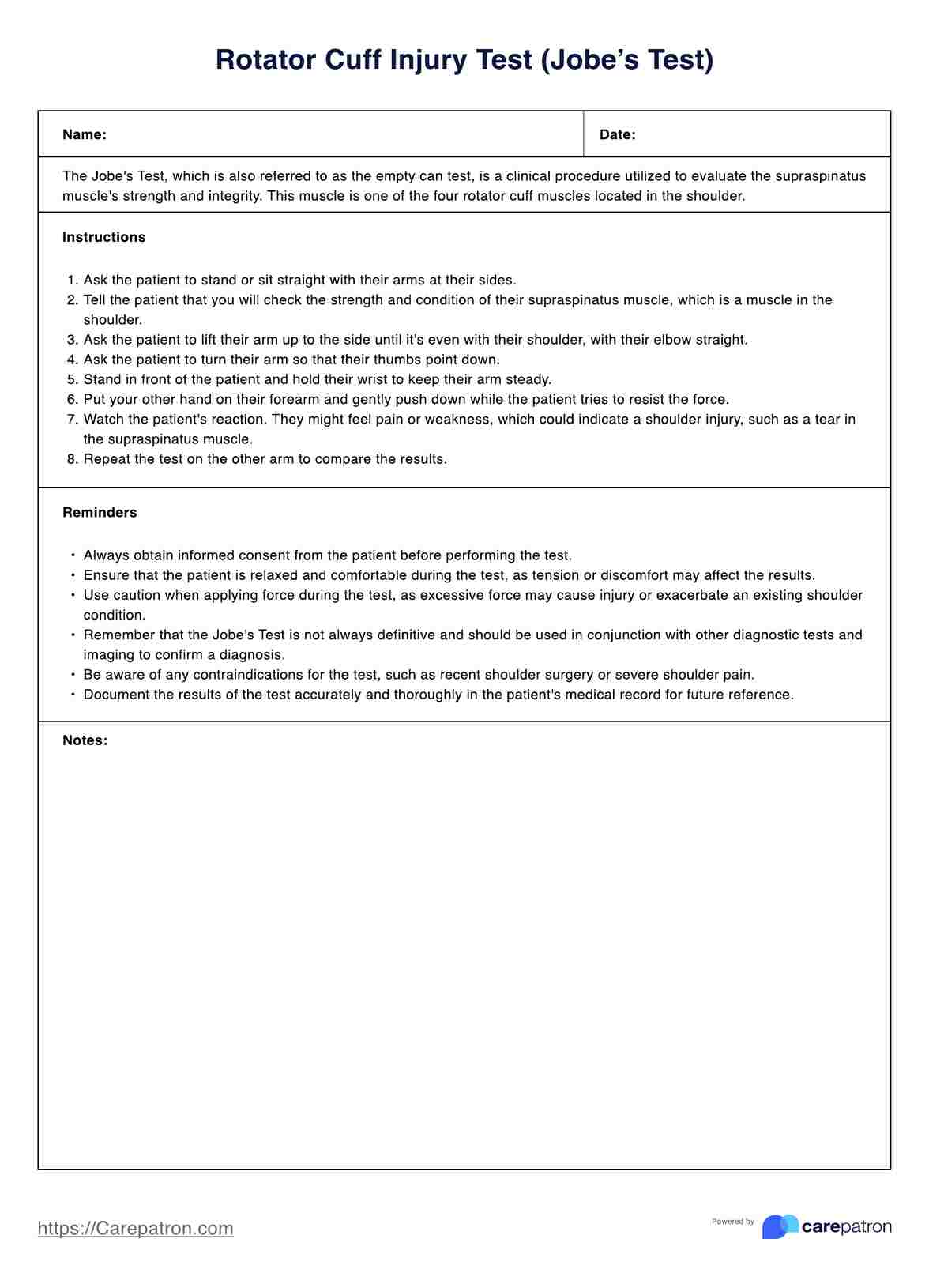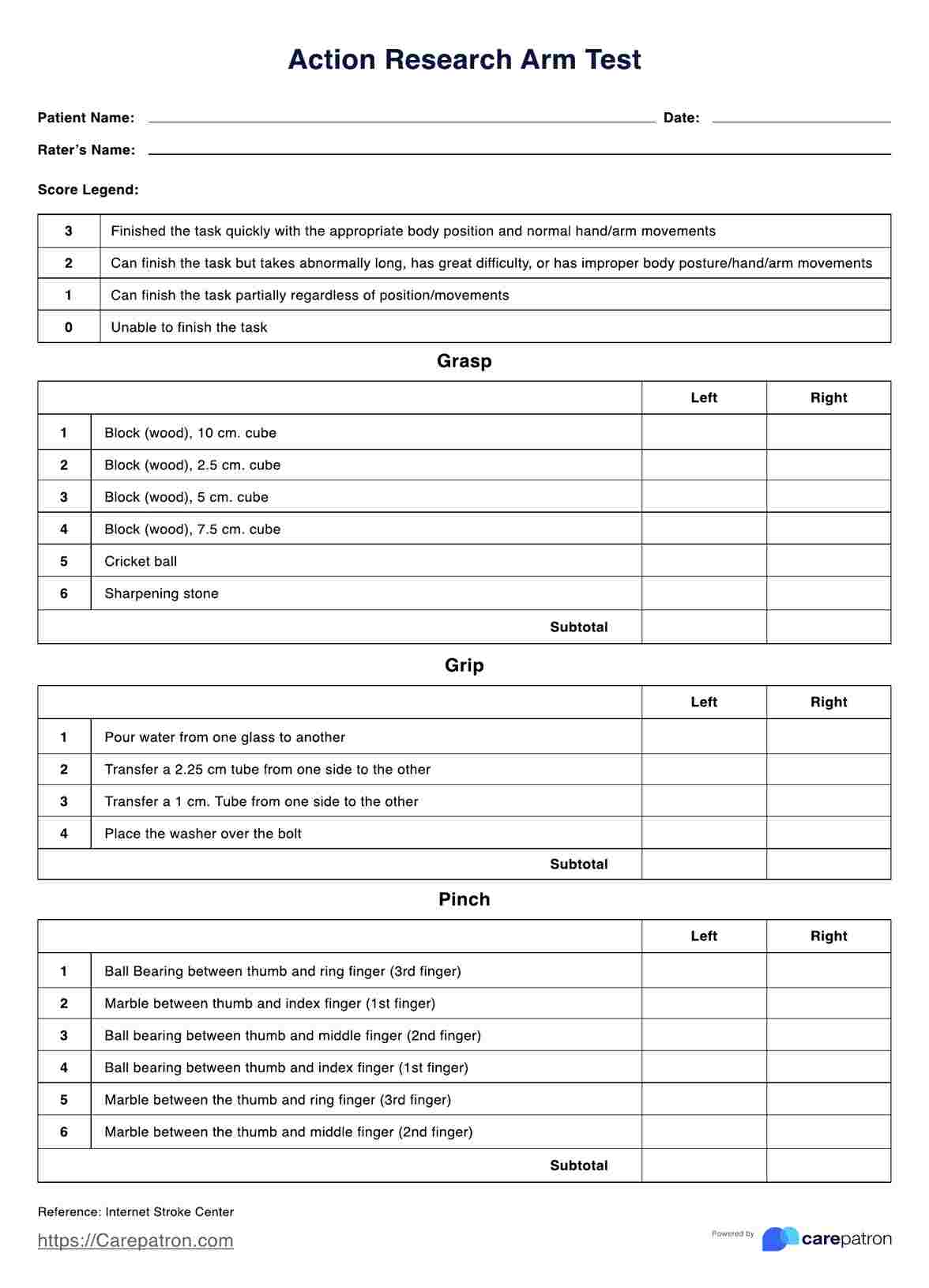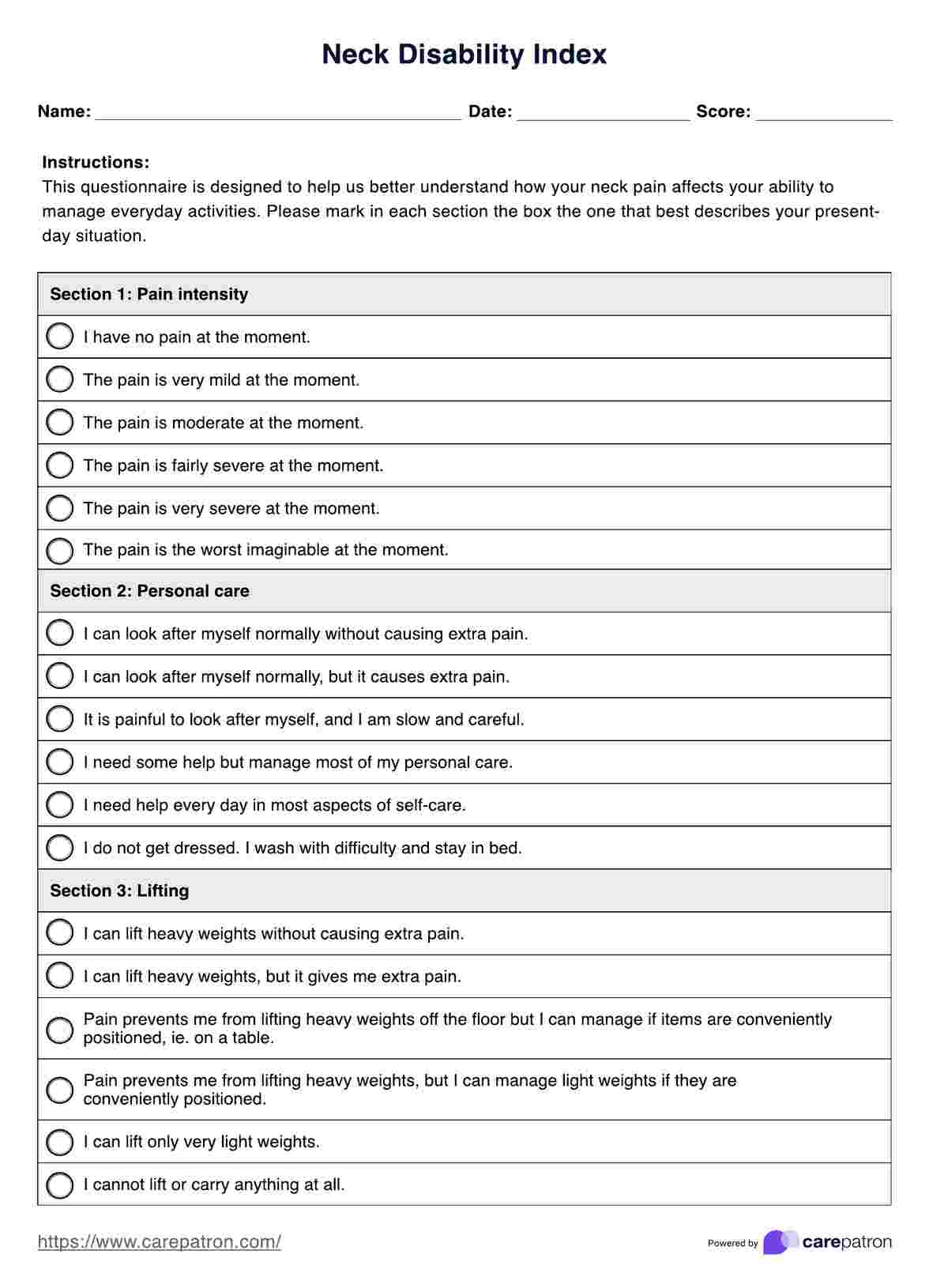Weight Loss Measurement Chart
Streamline tracking of physical changes in weight loss journeys with our Weight Loss Measurement Chart Template, perfect for healthcare and fitness pros!


What is a Weight Loss Measurement Chart Template?
A Weight Loss Measurement Chart Template is a detailed tool for tracking physical changes during a weight loss journey. It measures various body parts to provide a comprehensive view of how the body changes in response to weight loss efforts.
The template provides a more nuanced picture of weight loss than just the number on a scale. This printable body measurement chart for weight loss documents neck, chest, arms, waist, hips, and calf measurements, allowing individuals and healthcare professionals to track where weight loss occurs in the body. This can be particularly motivating and informative, providing tangible evidence of physical changes that weight might not reflect.
We created this Weight Loss Measurement Chart Template to complement traditional weight tracking methods. It offers a simple yet effective tool for healthcare professionals to help patients accurately track progress and understand their bodies' response to diet and exercise changes.
Weight Loss Measurement Chart Template
Weight Loss Measurement Chart Example
How does it work?
Using our Weight Loss Measurement Chart is straightforward. Here's how you can use our template to help your patients and clients track their fitness journey:
Step 1: Access our template
Download our user-friendly and adaptable Weight Loss Measurement Chart Template to effectively monitor physical transformations in weight loss patients.
Step 2: Explain the sheet to the patient
Take time to explain the purpose and importance of body measurement charts like this one to the patient. Highlight how it will track changes in body measurements, providing a comprehensive view of their weight loss progress beyond just scale numbers. Also, when taking body measurements, instruct individuals to stand tall with feet together and stay relaxed to ensure consistent and accurate results.
Step 3: Record baseline measurements
Using a measuring tape, measure and record the baseline (initial) measurements of the patient's body parts listed on the chart. To ensure accuracy, advise patients to wear fitted clothing when taking these measurements. This initial data will serve as a reference point for future measurements.
Step 4: Schedule regular measurement sessions
Set up a regular schedule for taking measurements, such as bi-weekly or monthly, to consistently monitor the patient's physical changes over time. As body composition changes, measurements might also change.
Step 5: Update and compare measurements
At each scheduled session, update the chart with the current measurements of the patient's body parts. Compare these with the previous entries to track changes and trends.
Step 6: Analyze and discuss changes
Analyze the measurement changes with the patient, discussing areas where significant changes are observed. This step is crucial for motivating patients and adjusting their fitness goals and weight loss plans.
Step 7: Document and provide feedback
Use the comments section to note relevant observations or feedback regarding the patient's progress. This might include notes on their diet, exercise regimen, or other factors affecting their weight loss.
When would you use this template?
The Weight Loss Measurement Chart Template is beneficial when detailed tracking of a patient's or client's physical changes is essential. Here are some situations where this proves invaluable:
Initial fitness or weight loss consultation
The chart can record baseline body measurements at the onset of a fitness or weight loss program. This initial data provides a starting point for tracking changes and setting a realistic goal weight.
Regular health and fitness assessments
The template is ideal for ongoing monitoring for regular check-ups or fitness assessments. It helps in observing physical changes over time, which is crucial in evaluating the effectiveness of diet and exercise regimens.
Post-treatment or post-surgery monitoring
The chart is essential for monitoring the recovery and physical transformation of patients who undergo medical treatment or surgery that affects their weight and body shape, such as bariatric surgery.
Progress tracking in fitness programs
Fitness professionals can use the chart to track their clients' progress in personal training or specific fitness programs. It provides a clear record of how a client's body responds to the training and whether their diet and nutrition are effectively helping them burn fat and reach their goals.
Motivation and goal-setting
Seeing tangible changes in body measurements can motivate patients and clients. The chart helps set achievable goals and celebrate their weight loss or fitness milestones.
Who can use our template?
This body measurements for weight loss chart is designed for various healthcare and fitness professionals. Here's a concise list of professionals who can benefit from using this template:
- Dietitians and nutritionists
- General practitioners
- Bariatric surgeons
- Personal trainers
- Fitness coaches
- Physical therapists
- Weight loss counselors
- Health coaches
These professionals can use the Weight Loss Measurement Chart Template to accurately track their clients' or patients' body measurements, aiding in developing and adjusting personalized weight loss and fitness plans.
Make sure to check out our Weight Loss Chart if you're looking for similar resources!
Commonly asked questions
To create a Weight Loss Measurement Chart Template, record the patient's or client's initial body measurements in various areas such as neck, chest, arms, waist, hips, and calves, and then update these measurements regularly to track changes over time.
These templates are used during initial weight loss or fitness consultations, regular health check-ups, post-treatment monitoring, throughout fitness programs, and for goal setting and motivation in weight management and fitness journeys.
Healthcare and fitness professionals use these templates to systematically record and track changes in body measurements of their patients or clients, providing a comprehensive view of physical progress during weight loss or fitness regimens.


